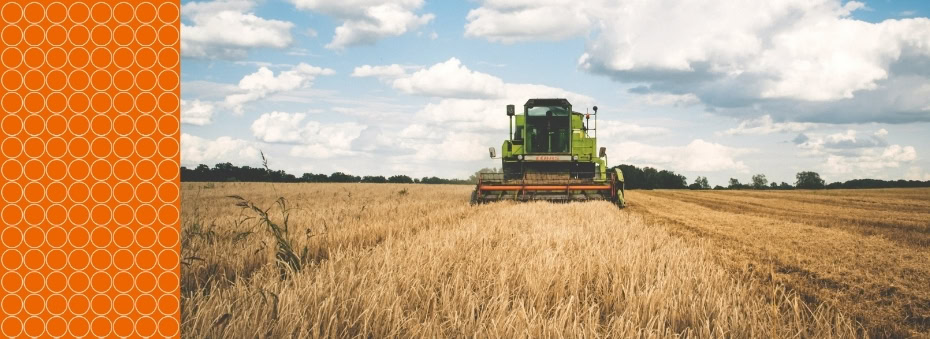
Recent news in Food & Feed Analysis
- Home
- /
- Ergot Alkaloids in Grains:...
Ergot Alkaloids in Grains: From Medieval Madness to Modern Mycotoxins

The Haunting Legacy of St. Anthony’s Fire
Long before “ergot alkaloids ” were known and identified, their devastating effects were etched into the cultural memory of Europe as St. Anthony’s Fire. This mysterious disease, now known as ergotism, was caused by consuming rye and other grains contaminated with the fungus Claviceps purpurea. Victims suffered burning sensations, hallucinations, convulsions, and gangrene—often leading to the loss of limbs and death.
The disease was so widespread and terrifying that it inspired the founding of the Order of St. Anthony in 1095, a monastic brotherhood that established over 370 hospitals across Europe. Their treatment—which involved various religious practices, ointments, and the use of high-quality wheat instead of contaminated rye—was inadvertently effective, although the cause remained unknown for centuries. This suffering also found expression in the art of Pieter Bruegel the Elder and Hieronymus Bosch. Bruegel’s piece “The Beggars” probably shows survivors of Ergotism.
Today, while the threat of ergotism has shifted from spiritual torment to regulatory compliance, the legacy of St. Anthony’s Fire remains a powerful reminder of how deeply food safety is intertwined with history, culture, and human resilience.
Ergot Alkaloids and the New EU Regulatory Landscape
Ergot refers to the dark, crescent-shaped sclerotia formed by Claviceps fungi on cereal ears. These sclerotia contain ergot alkaloids, a group of over 50 tryptophan-derived toxins. The most relevant for food safety include ergometrine, ergotamine, ergosine, ergocristine, ergocryptine, and their respective epimers.
Consumption of contaminated grains can lead to ergotism, and while modern outbreaks are rare, the risk remains significant—especially in regions with cool, wet climates that favor fungal growth.
The European Union has responded with increasingly stringent regulations. The latest update—Commission Regulation (EU) 2024/1808—amends Regulation (EU) 2023/915 and introduces lower maximum levels for these contaminants in various grain products:
- Unprocessed rye grains: Limit reduced from 0.5 g/kg to 0.2 g/kg (effective July 2025)
- Milling products of barley, spelt, and oats: Limit reduced from 100 µg/kg to 50 µg/kg (effective July 2024)
- Milling products of wheat and rye: Reduction to 50 µg/kg and 250 µg/kg respectively, postponed to July 2028
These changes reflect growing concerns over climate-driven increases in fungal contamination and the need for more stringent food safety controls.
Challenges for Grain Producers and Testing Laboratories
The new limits present significant hurdles for the industry:
- Climate variability: Cooler, wetter conditions in parts of Europe have led to increased ergot contamination.
- Agricultural practices: Reduced tillage and higher grass-weed pressure favor the fungus lifecycle.
- Analytical complexity: Ergot alkaloid levels do not always correlate with visible sclerotia, complicating detection and quantification.
- Regulatory inconsistency: Varying standards across countries create trade barriers and compliance confusion.
Testing laboratories must now deliver highly sensitive, multi-analyte detection with rapid turnaround times, often under resource constraints.
Comprehensive Solutions for Compliance and Safety
To meet these challenges, we can offer two solutions:
1. QualiT Pure™ Multi-Ergot Alkaloid MS
This solid-phase clean-up column is optimized for LC-MS/MS analysis of 13 key ergot alkaloids, including ergocornine, ergocristine, ergotamine, and ergovaline. It simplifies sample preparation and enhances accuracy by removing interfering compounds.
- Format: Syringe-style columns
- Use: Multi-analyte screening in cereals and milling products
- Benefit: Reliable purification for high-throughput labs
- More info: QualiT Pure™
2. Trilogy Analytical Laboratory’s Ergot Alkaloid Panels
Trilogy offers third-party testing services with customizable panels:
- Single Alkaloid Analysis
- 12-Analyte Panel
- 13-Analyte Panel (incl. Ergovaline)
The Trilogy LC-MS/MS methods are validated for food and feed matrices, making them ideal for producers needing external verification or reference materials.
More info: Trilogy Ergot Alkaloid Analysis
Looking Ahead: Collaboration and Vision
Mycotoxins have plagued mankind since the early days of agriculture. Ergotism was likely as early as the 9th century already mentioned in the Annales Xantenses, and we can safely assume that mycotoxins will continue to accompany us in the future. However, we nowadays have more and better tools to protect animals and consumers:
- Predictive modeling to identify contamination hotspots
- Enhanced surveillance in high-risk regions
- Standardized testing protocols across borders
- Fit-for-purpose analytical methods
- Quality Control tools
As the regulatory landscape evolves, collaboration between producers, labs, and regulators will be key. We are proud to contribute our part —by advocating for harmonized standards, educating stakeholders, and promoting best practices in testing and risk mitigation.
